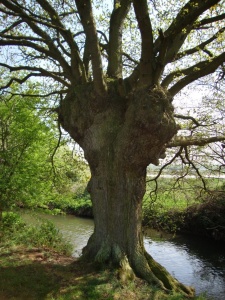Coppicing and Pollarding
Coppicing is a traditional method of tree management that involves repetitive cutting of the same stump (Stool), near to the ground, allowing the shoots to regrow. This is to provide a supply of small-wood for fencing/hedge laying, wattle, charcoal, furniture, and other uses, most recently for bean poles.
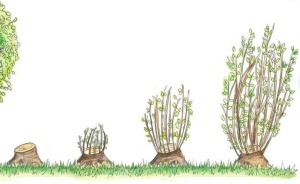
Coppice regrowth. ©: Emma Jolly/ WTML
Most coppicing would be in particular woods which would have large “standard” trees and other trees which would be coppiced. The most common was Hazel but Sweet Chestnut was also coppiced.
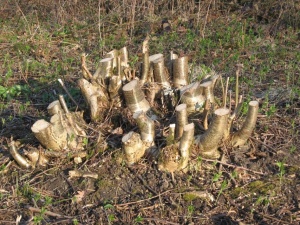
Hazel coppice stool.
Rowhill Copse is still managed with rotational coppicing, done by the volunteers, it produces open areas where the woodland flowers can flourish after the cut. It is well worth a visit in Bluebell time.
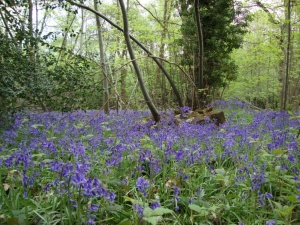
There are a few abandoned coppice trees along the Valley like this one near Farnborough North Station.
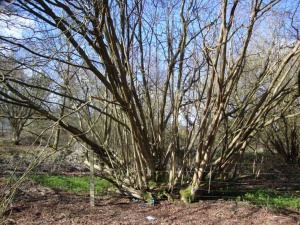
Pollarding
Pollarding is a similar management tool but involves the regular cutting of upper branches to encourage regrowth of dense foliage at the top of the tree.
The cut branches can be used for firewood, building materials and other coppice products. Pollarded branches were traditionally used for animal fodder. When woodland trees were pollarded it opened up the canopy in the same way as coppicing.
There was a very large Black Poplar in Shepherd Meadows, Sandhurst but it became too large and fell apart. Nearby there is a Weeping Willow which has been pollarded within the last ten years. You may find abandoned pollards along the valley as they are no longer used as in the past.
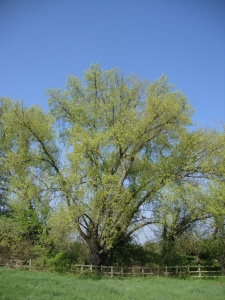
Black Poplar before collapse.
The next picture shows a Pollarded Oak tree alongside the Blackwater at Swan Lake Park, the very swollen top shows that it has been pollarded over many years, although this is unlikely to continue today.
